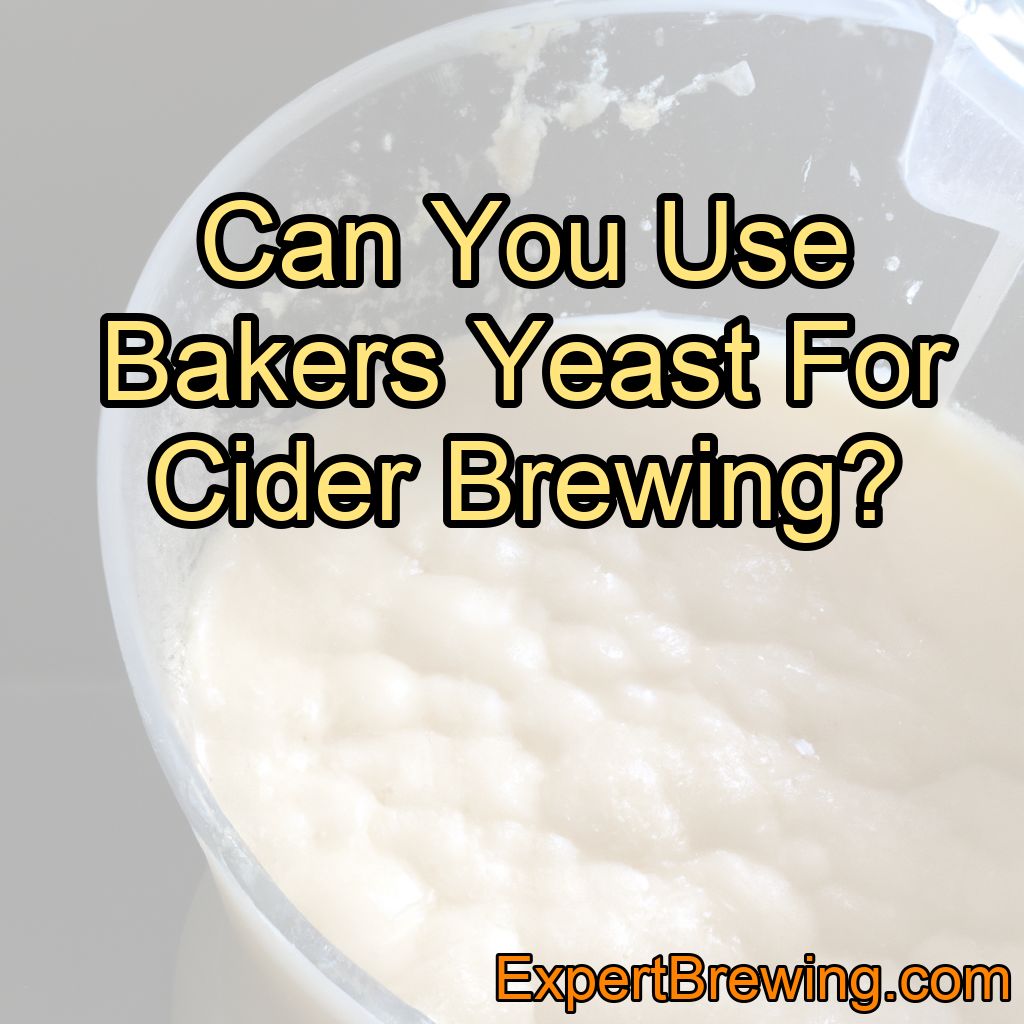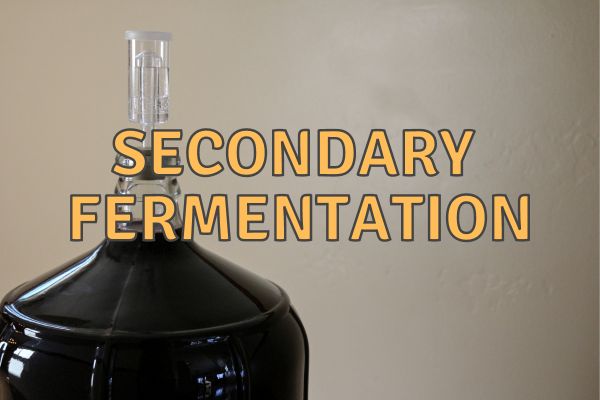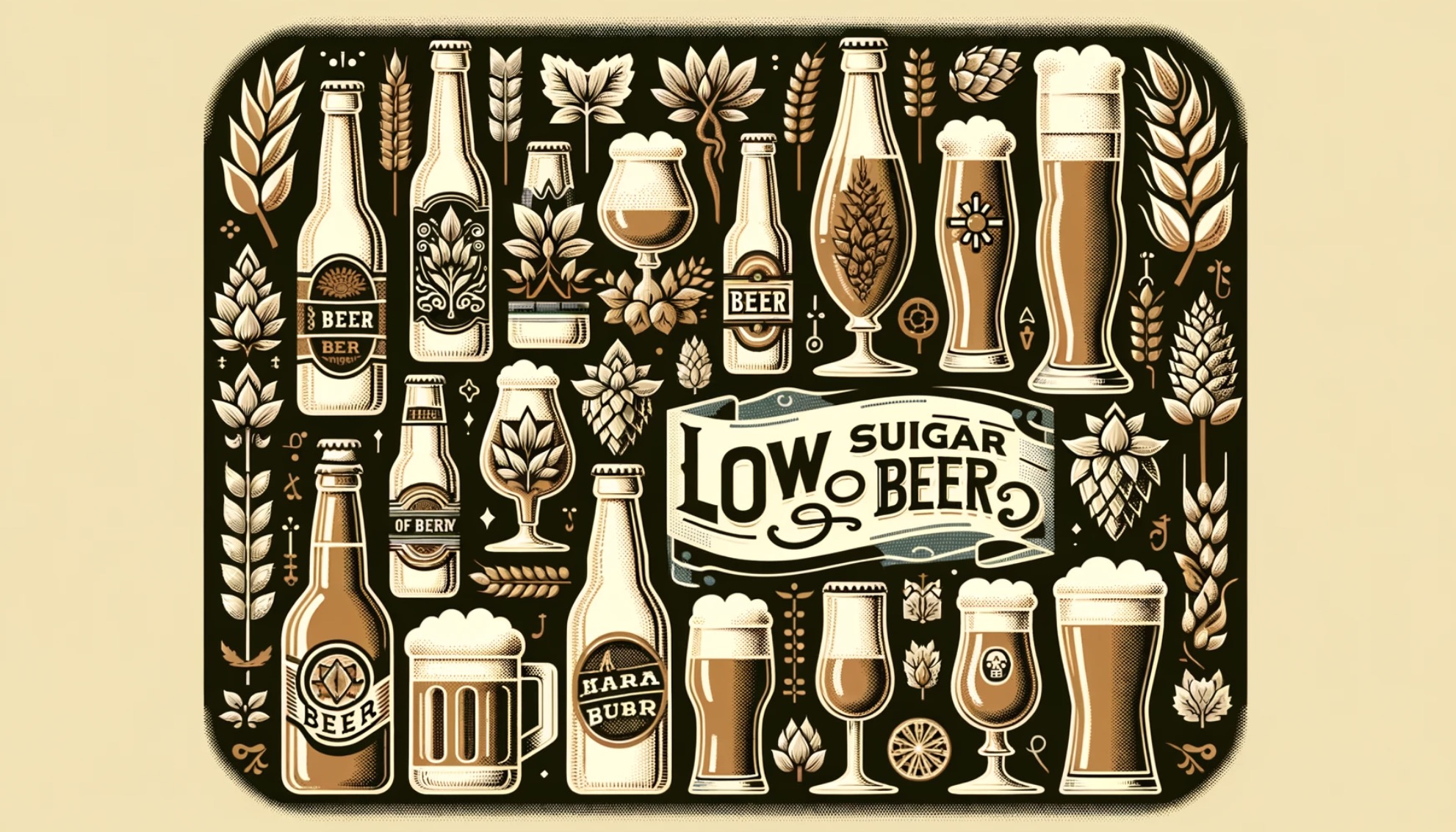As a brewer, you may have wondered whether you can use bakers yeast for cider brewing. With the wide range of yeasts available in the market, it’s natural to be curious about which types of yeast can be used for different brewing processes.
Yes, you can use bakers yeast for cider brewing, but it will likely produce a different flavor profile than what you might be used to with traditional Cider yeasts. The final product may also have a higher alcohol content and less residual sugar.
In this blog post, we’ll explore the use of bakers yeast in cider brewing, discuss its potential impact on the final product, and compare it with other types of yeast commonly used for cider making.
What is Bakers Yeast?
Bakers yeast, or Saccharomyces cerevisiae, is a type of yeast commonly used for bread making. It’s also known as bread yeast or simply yeast. Bakers yeast is a single-celled organism that ferments sugars, producing carbon dioxide and alcohol as byproducts.
In bread making, the carbon dioxide gas is trapped within the dough, causing it to rise and create the characteristic texture of bread.

Bakers yeast is widely available and can be found in various forms, including active dry, instant, and fresh yeast. It’s an essential ingredient in many baking recipes, from bread to pastries to pizza dough.
What is Cider Yeast?
Cider yeast, also known as Saccharomyces bayanus or Saccharomyces uvarum, is a type of yeast specifically designed for fermenting apple juice into cider. It’s selected for its ability to create desirable flavor profiles, tolerate a wide range of temperatures, and ferment a variety of sugars found in apples.
Cider yeast is available in both liquid and dry forms, and there are several strains to choose from, each offering unique characteristics to the final cider product. Some popular cider yeast strains include:
- Lalvin EC-1118: A champagne yeast that ferments cleanly and quickly, producing a crisp and dry cider
- Safcider: A versatile yeast that works well with a wide range of apple varieties, producing a balanced and fruity cider
- Wyeast 4766 Cider: A specialized cider yeast that ferments slowly and produces a complex, full-bodied cider with a rich mouthfeel
Bakers Yeast vs. Cider Yeast
Now that we know what bakers yeast and cider yeast are let’s dive into the differences between the two and how they might impact cider brewing.
Flavor Profile
One of the main differences between bakers yeast and cider yeast is the flavor profile they impart on the final product. Bakers yeast tends to produce a more robust, bread-like flavor, which may not be the desired taste for a cider.
Cider yeast, on the other hand, usually results in a cleaner, more apple-forward flavor, with a balance of sweetness and acidity. The type of cider yeast used can also impact the overall character of the cider, from crisp and dry to rich and complex.
Fermentation Speed
Bakers yeast is known for its fast fermentation speed, which can be both a pro and a con for cider brewing. While a quicker fermentation may sound appealing, it can also lead to a less nuanced flavor profile in the final cider.
Cider yeast strains generally ferment more slowly, allowing for a more gradual development of flavors and aromas. This slower fermentation also allows for better control over the final cider’s sweetness and acidity levels.
Alcohol Content
Bakers yeast is designed to produce a high level of alcohol, which can result in a higher alcohol content in the final cider compared to using cider yeast. While this may be desired by some, it can also lead to a more aggressive taste and a less balanced final product.
Cider yeast strains typically produce a more moderate alcohol content, making for a smoother and more drinkable cider.
Residual Sugar
Bakers yeast is known for its ability to ferment a wide range of sugars, often leaving very little residual sugar in the final product. This can result in a very dry cider with little to no sweetness.
Cider yeast strains are typically more selective in their sugar consumption, leaving some residual sweetness in the final cider. This can create a more balanced and enjoyable drinking experience.
Using Bakers Yeast in Cider Brewing: Potential Benefits
While using bakers yeast for cider brewing may not be the traditional choice, there are some potential benefits to consider:
1. Availability: Bakers yeast is widely available and easy to find, making it a convenient option for homebrewers who don’t have access to specialized cider yeast.
2. Cost: Bakers yeast is generally less expensive than cider yeast, making it an appealing option for budget-conscious brewers.
3. Experimentation: Using bakers yeast can provide an opportunity to experiment with different flavor profiles and create unique ciders that stand out from the crowd.
Using Bakers Yeast in Cider Brewing: Potential Drawbacks
However, there are also some potential drawbacks to using bakers yeast in cider brewing:
1. Flavor: As mentioned earlier, bakers yeast can produce a more bread-like flavor in the final cider, which may not be desirable for those seeking a more traditional apple-forward taste.
2. Fermentation Speed: The fast fermentation speed of bakers yeast can make it harder to control the final cider’s sweetness and acidity levels, potentially leading to a less balanced product.
3. Alcohol Content: The higher alcohol content produced by bakers yeast can result in a more aggressive taste and a less drinkable cider.
Tips for Using Bakers Yeast in Cider Brewing
If you’re interested in experimenting with bakers yeast in your cider brewing, here are some tips to help you get started:
1. Start with a small batch: When trying something new, it’s always a good idea to start with a small batch to minimize potential waste if the results aren’t to your liking.
2. Monitor fermentation: Keep a close eye on the fermentation process, and consider taking gravity readings to track the progress and help determine when to stop fermentation to achieve your desired sweetness level.
3. Experiment with different strains: There are many strains of bakers yeast available, so try different ones to see which produces the best results for your cider.
4. Blend with cider yeast: If you’re not completely satisfied with the results of using bakers yeast alone, consider blending your bakers yeast-fermented cider with a batch fermented using a traditional cider yeast to balance the flavors and achieve a more desirable final product.
Conclusion
In conclusion, while it is possible to use bakers yeast for cider brewing, it’s important to be aware of the potential differences in flavor, fermentation speed, alcohol content, and residual sugar compared to using traditional cider yeast. If you choose to experiment with bakers yeast, consider starting with a small batch, closely monitoring the fermentation process, and trying different strains to find the one that best suits your cider preferences.
To wrap up, here are 10 key facts about using bakers yeast in cider brewing:
1. Bakers yeast is a type of yeast commonly used in bread making.
2. Cider yeast is specifically designed for fermenting apple juice into cider.
3. Bakers yeast can produce a more robust, bread-like flavor in cider.
4. Cider yeast typically results in a cleaner, more apple-forward flavor.
5. Bakers yeast ferments quickly, which can impact the final cider’s flavor profile.
6. Cider yeast strains generally ferment more slowly, allowing for better flavor development.
7. Bakers yeast can result in a higher alcohol content in the final cider.
8. Cider yeast strains usually produce a more moderate alcohol content.
9. Bakers yeast can leave very little residual sugar, resulting in a very dry cider.
10. Cider yeast strains are more selective in their sugar consumption, often leaving some residual sweetness in the final product.
FAQs
Does type of yeast matter for cider?
Yes, the type of yeast used can greatly impact the flavor and aroma profile of the cider. Different strains of yeast can produce varying levels of alcohol, acidity, and esters, which can affect the overall taste and complexity of the cider. It is important to choose a yeast that complements the desired flavor profile of the cider.
Can I use beer yeast for cider?
Yes, beer yeast can be used for making cider. However, it is important to note that different strains of yeast can affect the flavor and aroma of the final product. It is recommended to use a yeast strain specifically designed for cider to achieve the desired flavor profile.
Can you use lager yeast in cider?
While it is possible to use lager yeast in cider, it is not recommended as lager yeast is typically used for brewing beer and may not produce the desired flavor profile for cider. Additionally, lager yeast requires lower fermentation temperatures than typical cider yeast, which can be difficult to achieve in home brewing settings. It is best to use a cider-specific yeast strain for optimal results.
Does cider contain brewers yeast?
Yes, cider can contain brewers yeast. Brewers yeast is often used in the fermentation process to convert the sugars in the apple juice into alcohol. However, some ciders may also use other types of yeast or be filtered to remove the yeast before packaging.
Can you put yeast in apple juice?
Yes, you can put yeast in apple juice to ferment it and make hard cider.
Can I use bakers yeast to ferment apple juice?
Yes, bakers yeast can be used to ferment apple juice. However, it may not produce the best results in terms of flavor and alcohol content compared to using specialized yeast strains for cider making.




